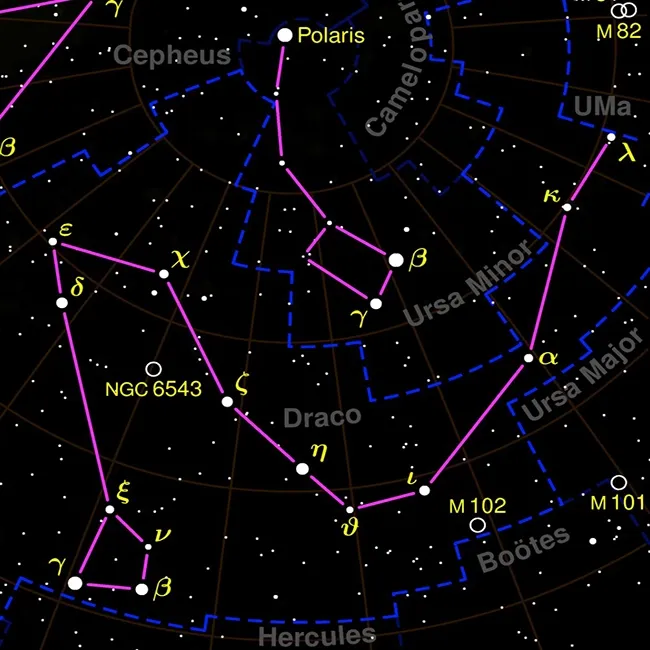
Draco, Latin for "Dragon," is a long, winding constellation that resides in the northern sky. It's one of the largest constellations, ranking eighth in size out of the 88 recognized constellations. Draco's serpentine shape winds between the Big Dipper and Little Dipper, making it easy to locate for observers in the Northern Hemisphere.
Key Features
Draco is notable for its length, stretching across a significant portion of the sky. The constellation is home to several interesting celestial objects, including the Cat’s Eye Nebula (NGC 6543), a well-known planetary nebula. Draco also hosts the dwarf galaxy Draco Dwarf, a satellite of the Milky Way.
The constellation does not contain any first-magnitude stars, making it less prominent compared to others. However, its distinctive shape, resembling a dragon or snake, makes it recognizable.
Mythology
In Greek mythology, Draco represents the dragon slain by the hero Hercules during his Twelve Labors. According to the myth, Draco guarded the golden apples in the garden of the Hesperides, a task he failed when Hercules defeated him. The gods placed Draco among the stars to commemorate the dragon's role in this famous myth.
Another version of the myth ties Draco to the dragon Typhon, a monstrous serpentine giant who battled Zeus. After the battle, Zeus threw Typhon into the sky, where he became the constellation Draco.
Notable Stars
Draco contains several notable stars, though none are particularly bright:
- Thuban (Alpha Draconis): Once the pole star around 2700 BCE, Thuban is a white giant star located about 300 light-years away from Earth.
- Eltanin (Gamma Draconis): The brightest star in Draco, Eltanin is an orange giant star approximately 154 light-years away.
- Rastaban (Beta Draconis): Another bright star, Rastaban is a yellow giant located about 380 light-years from Earth.
Visibility
Draco is visible throughout the year in the Northern Hemisphere due to its proximity to the North Celestial Pole. It is circumpolar, meaning it never sets below the horizon for most northern observers. The constellation is best seen during the summer months when it is high in the sky.
Tips for Observing
To locate Draco, start by finding the Big Dipper and Little Dipper. Draco winds between them, with its head near the bright star Vega in the constellation Lyra. Although its stars are not particularly bright, Draco’s elongated shape and distinct pattern make it relatively easy to trace.
A good pair of binoculars or a small telescope can enhance the viewing experience, especially when looking for objects like the Cat’s Eye Nebula or the Draco Dwarf galaxy. Observing under dark skies away from city lights will also improve visibility.
Whether you’re a novice stargazer or an experienced astronomer, Draco offers a fascinating glimpse into both celestial wonders and ancient mythology.
